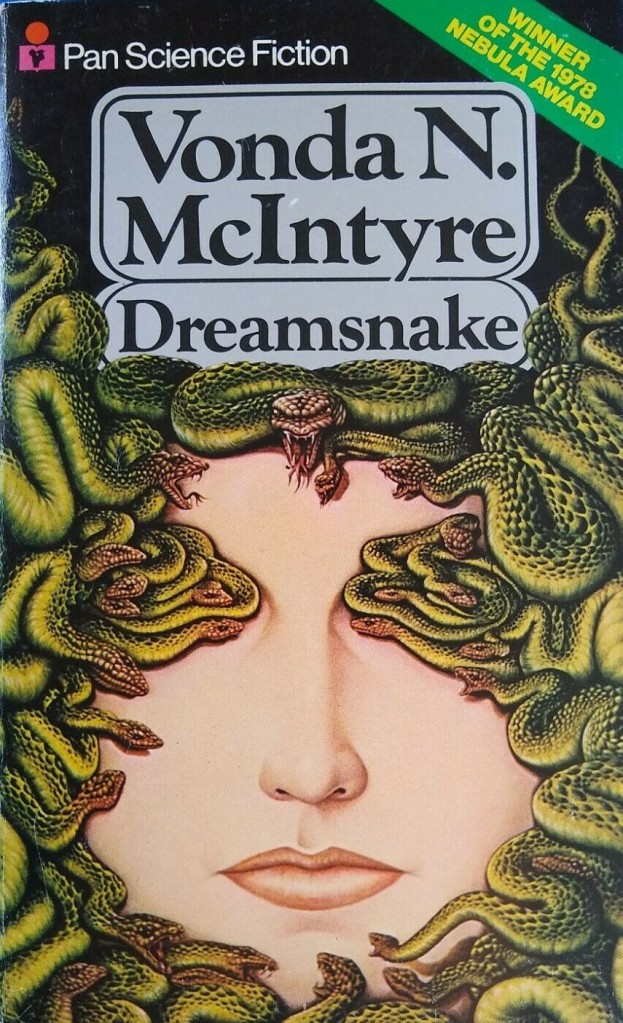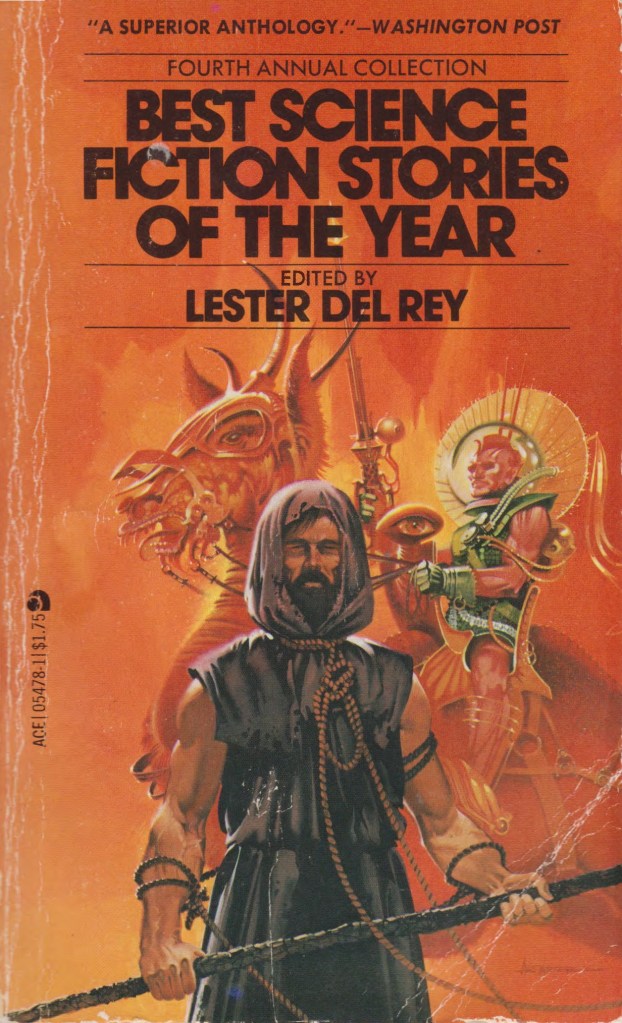Below are a group of uncredited covers whose artists I have not been able to firmly identify. Some were brought to my attention by Adam who runs a collectible SF store (link). I’d love to hear your input — make sure to read the guidelines.
Guidelines: If you think a cover is the work of a particular artist, please please please provide some evidence for your claim: for example, a comparison cover, a citation from a book/resource, or, perhaps a link to a canvas or artist webpage. This makes identifying the artist more authoritative than a vague claim and readers can follow along more easily. If you think you’ve identified the author, I recommend peeking at their other credited covers at The Internet Speculative Fiction Database.
Pocket Books was notoriously bad at citing their artists. If we are able to identify a few of those below (Margaret and I and Journey), we might be able to nail down tens more covers missing citations in their catalogue.
The three covers below for Fred Saberhagen’s Empire in the East sequence are clearly by the same artist—the style seems so familiar! And, the 1974 Signet edition of Cage a Man (1973), F. M. Busby is credited as FMA only. I wonder if it’s possible to identify who FMA was.
In some cases, I have a pretty good idea who the artist might be but don’t have enough evidence…. I am convinced that Stanislaw Fernandes created the 1974 Signet edition of New Dimensions IV (1974) , ed. Robert Silverberg. Although, it would be very early in his career and love to have some firm evidence.
I look forward to your ideas!
EDIT: I’ve gone ahead and indicated which ones have been solved by inserting the artist into the citation.
For more Adventures in SF Cover Art consult the INDEX

(Bob Haberfield’s cover for the 1971 Tandem edition of The Man in the Maze (1968), Robert Silverberg) Continue reading →









